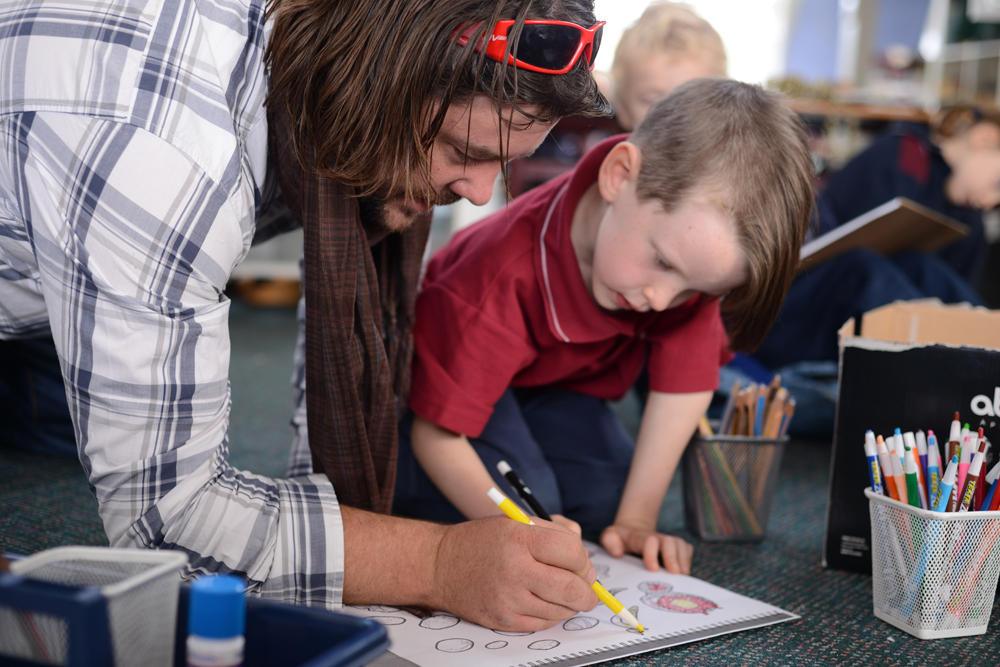In my day, as I was growing up, my art teachers collectively despised tracing or the use of tracing paper. It was a form of copying or not seen as art. It was to be used on school projects to accurately trace maps for assignments on the Roman army or the battle of Hastings. Boring factual stuff that had no real importance except to illustrate the mundane.
This thinking never sat with me very well. I always thought that Walt Disney animators would have constantly traced their cells and drawings to achieve emotional, fluid and seamless movements. So if animators trace why can’t we? I utilised the magic of tracing paper for many drawings and artistic projects. The way I saw it, was tracing paper was used in film development, cell animation and industrial design. If these commercial art forms employed it to produce their art why couldn’t I. But hey! I was probably 6-8 at the time, I had these rebellious thoughts, and if I dared air them to my teacher I’d be told off. So tracing paper remained my secret weapon in developing my drawings to a higher standard before I could draft the shapes with more adult precision.
One of my favourite things as a kid was watch the early morning cartoons. My parents had just discovered video recording and I was lucky enough to have one of the first ‘National’ brand of video recorders. So what I actually started doing was recording my favourite cartoons and anime and pausing the frames I liked. Then with tracing paper I’d stick the paper to the television glass screen and trace my favourite characters. It taught me heaps about foreshortening, dramatic perspectives, caricatures and how to create comic eyes.
What I learnt from this is that we don’t innately understand perspective. Our hand-to-eye coordination doesn’t immediately know or understand how to etcher-sketch this reality to paper. All people have to practice the art of drawing to have any capacity. We have to teach ourselves how to translate the spacious 3 dimensional world we see into the 2 dimensional world we draw on paper.
So lets take a drawing or a printed photograph. In one instance the artist and in the other the camera has already “flattened” the perspective and 3 dimensional space into a 2 dimensional image in which you can trace. The simple act of tracing is a great exercise (e.g. like cutting with scissors, colouring in and pasting collage) to hone the motor skills required in drawing. Funny enough it has no difference to normal drawing, still life or life drawing, albeit your subject matter rests under your sheet of paper not out in front of your easel. So by negating the changing in perspective or position of our head, that confuses the brain, when we look at an object and then look down to see our hand draw that object we suddenly just have to neatly trace the object underlying the page or tracing paper. This will give our hand confidence and help it understand the observational complexities need later when drawing from life.
Tracing in my opinion is an important first step in developing great hand-to-eye coordination. Tracing should be an essential exercise in mastering your drawing ability. All children should be encouraged to trace. In some ways, you have to learn how to crawl before you walk and definitely before you learn how to run.
Tracing should never be seen as a taboo. It should be an essential building block or tool in the pursuit of learning how-to-draw.
Step 1: Choose the best drawing you wish to trace. Something easy or something difficult – take your pick.
Step 2: Place tracing paper over the top. To stop the paper from moving use some tape. But be mindful if using library books as some tapes can deface and rip the pages or paper.
Step 3: Look for the best details. the ones that translate a photo to a strong line drawing.
 Step 4: Finish your tracing off hopefully without moving the tracing paper too much.
Step 4: Finish your tracing off hopefully without moving the tracing paper too much.
After you are finished a tracing you can use a soft graphite pencil scribble all over the underside of the tracing paper and then place the paper on some nice art paper. Then redraw your traced image. The pressure of the drawing will transfer your image neatly down on the new page. Then you have a great starting point to develop a new drawing.
But that’s another lesson.
Enjoy!
Myke.




